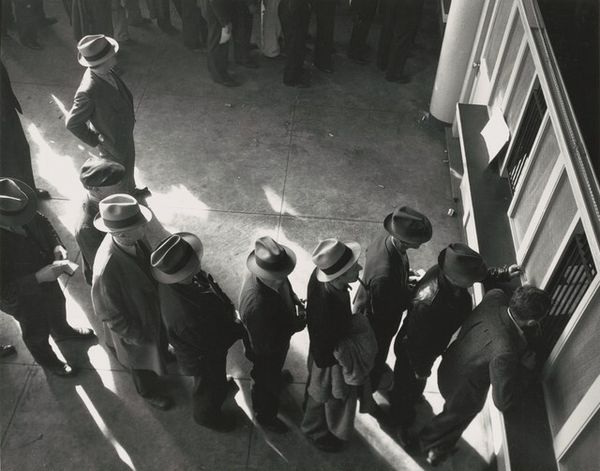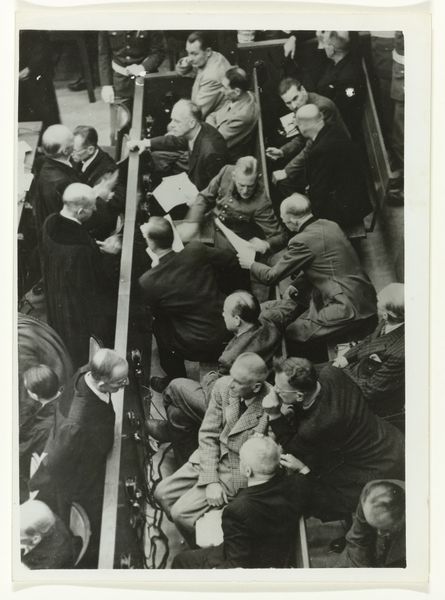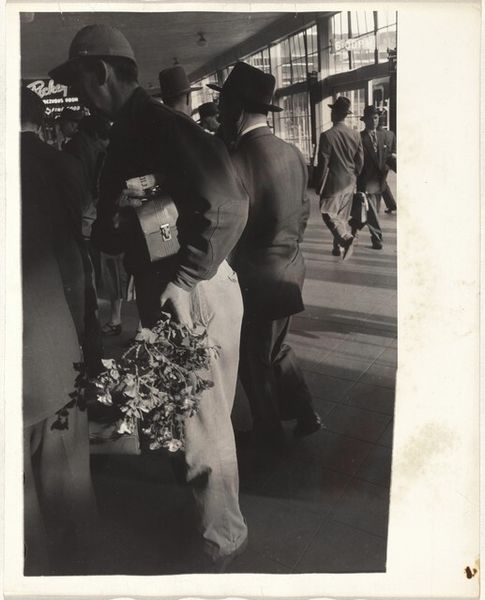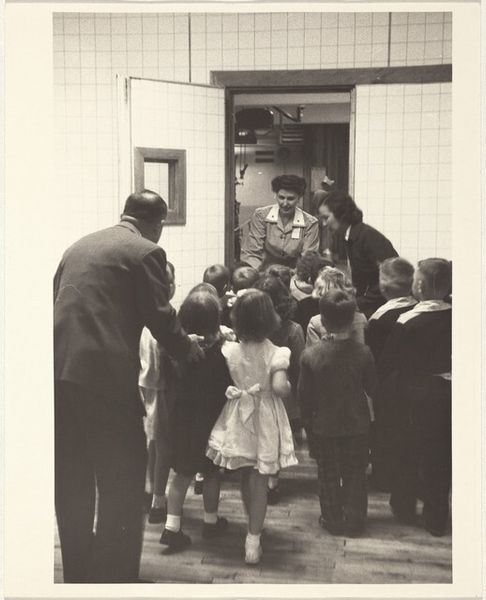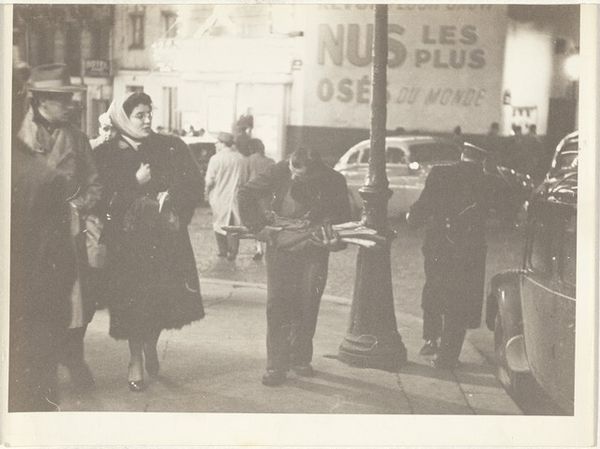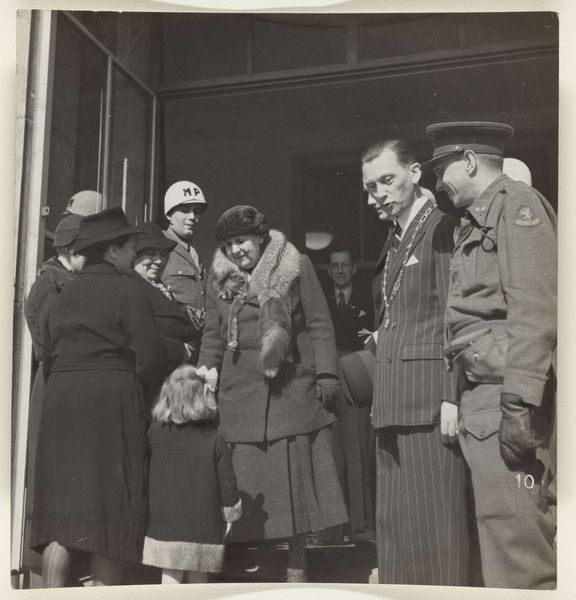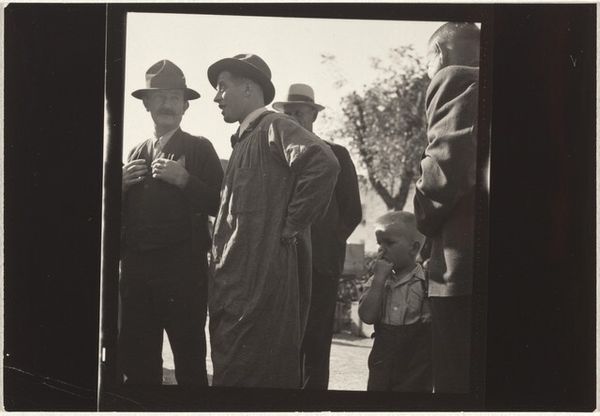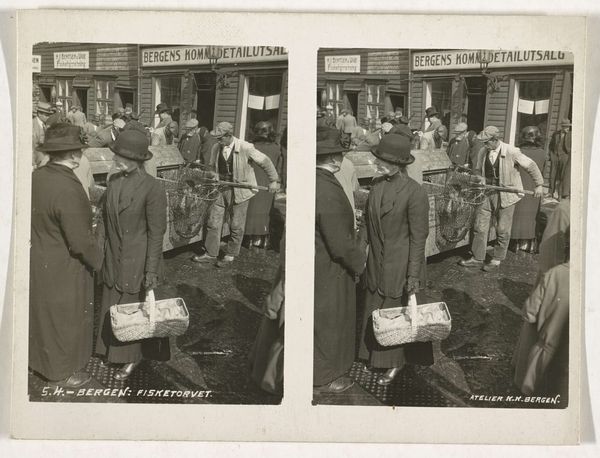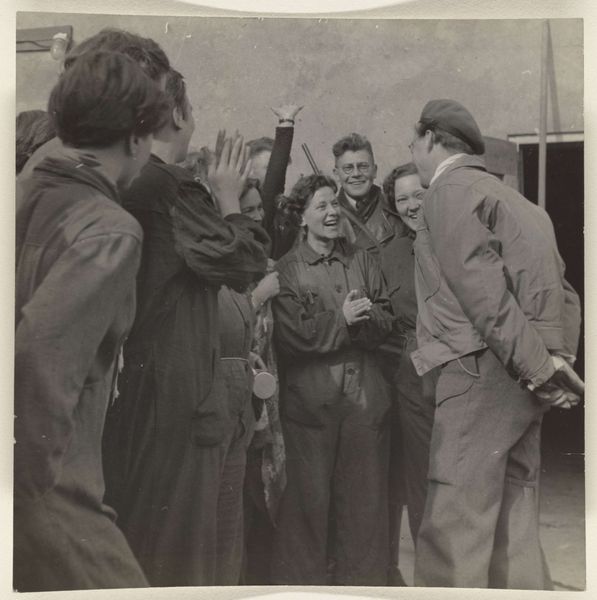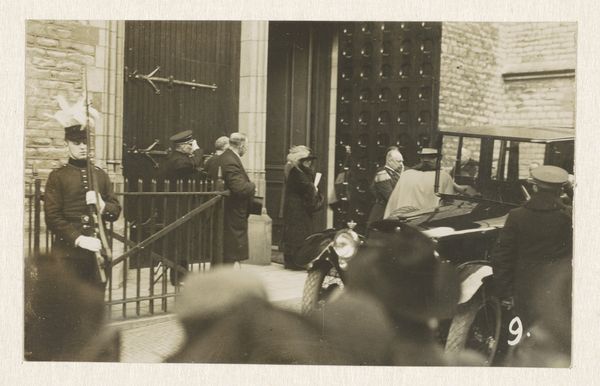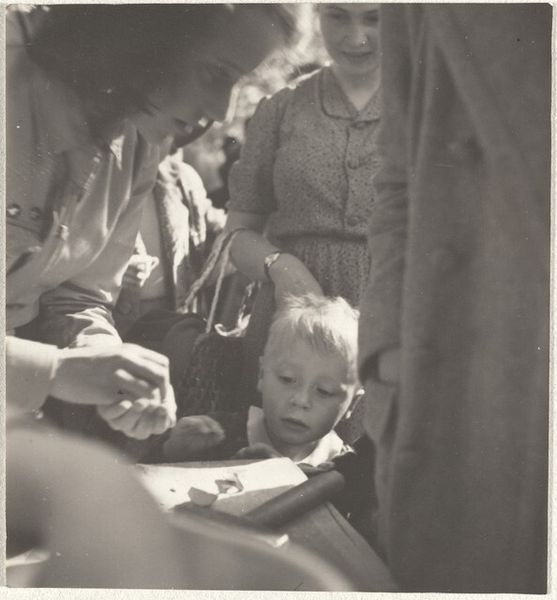
photography, gelatin-silver-print
#
portrait
#
narrative-art
#
black and white photography
#
black and white format
#
archive photography
#
street-photography
#
photography
#
historical photography
#
photojournalism
#
black and white
#
gelatin-silver-print
#
monochrome photography
#
ashcan-school
#
monochrome
#
realism
#
monochrome
Dimensions: image: 27 × 34.1 cm (10 5/8 × 13 7/16 in.) sheet: 27.9 × 35.2 cm (11 × 13 7/8 in.)
Copyright: National Gallery of Art: CC0 1.0
Curator: Weegee's gelatin silver print, dating from around 1940, titled "The Dead Man's Wife Arrived and Then She Collapsed," presents a stark moment captured in photojournalistic style. What's your immediate sense of it? Editor: It’s instantly gripping—that woman, being half-carried, half-dragged, her face a mask of...shock, or grief, maybe both? The harsh light emphasizes the drama, the vulnerability. There's such rawness to the image. Curator: Weegee, whose real name was Arthur Fellig, was famous for documenting the gritty realities of New York City life. This piece is a classic example, reflecting the urban environment during this era. Editor: The composition speaks volumes. Notice how the surrounding figures—especially those police officers—frame and almost contain the woman. It's an interesting commentary on authority, perhaps. What are the symbols, you think, in play here? What resonates beyond the immediate scene? Curator: The woman collapsing functions as a visual symbol for mourning and loss in many cultures. There is an archetypal element here. Yet I feel the specific context gives additional meaning. Weegee’s subjects were not anonymous. He focused on events that impacted ordinary people. This wasn’t merely grief. It speaks to a profound societal unease about safety and the rapid transformations happening around them at the time. Editor: Interesting. Do you think he sensationalized tragedy? After all, that was often the accusation hurled at photographers working during the Depression Era. Curator: There's definitely a degree of sensationalism at play; photojournalists during this period often competed to highlight dramatic events. But I also feel that he gave voice, gave visibility, to events the established institutions weren’t reporting with similar urgency. Weegee presented a stark reality that couldn’t be ignored, forcing viewers to confront it directly. Editor: A stark image of personal tragedy in a wider sociopolitical landscape. Food for thought. Curator: Indeed. And how his perspective on urban narratives resonates even today!
Comments
No comments
Be the first to comment and join the conversation on the ultimate creative platform.

